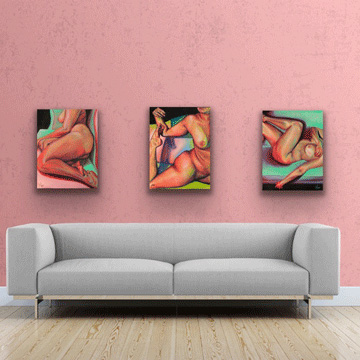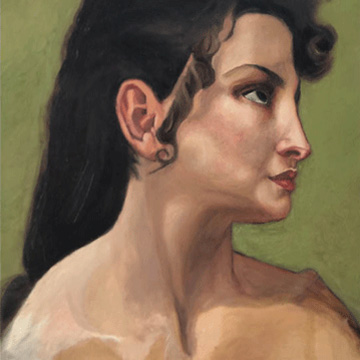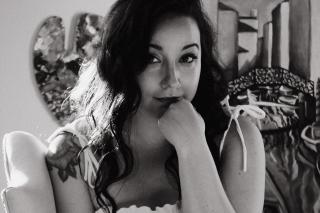What led you to Simmons to study physical therapy?
At sixteen, I underwent spinal fusion surgery for Scoliosis. After working with a physical therapist [during recovery], I started to think of that as a career. I was raised by a single mom who didn't have a college degree, so applying to college was huge for me. I liked the idea of a physical therapy program because it encompassed healthcare and fitness, and I could apply for the graduate program from high school. I wanted to be in Boston, so Simmons was the right choice.
What work have you done as a physical therapist?
I've done so many things in physical therapy since graduating! My first permanent position was doing pelvic floor therapy for women's sexual health at an outpatient facility. I knew I wanted to travel, but given the vulnerable nature of that specialty, there are no travel positions offered. I traveled to California and visited geriatric patients in their homes and nursing home facilities.
When the pandemic hit, I happened to be contracting with a Massachusetts nonprofit that placed me in an elementary/middle school in a low income area of Boston to work with children with special needs. When schools shut down, I was sent to a nursing facility in the same area. COVID was bad at nursing facilities, so the work was pretty traumatizing. I was in survival mode.
What kept me from having an actual mental breakdown, due to work stress and the lack of social interaction, was painting. My roommate at the time was an art school graduate. We went to Michael's and I bought a bunch of art supplies on sale. I started painting and didn't stop. I would come home from work every night and immediately start painting. I ended up with a hundred paintings. I'm so happy for this random gift that came to me at such a tragic time. I don't know where I would be if that hadn't happened.
How does your work as a physical therapist inform your artwork?

When I first got my art supplies, I thought, what do I paint? I'll paint a body! It was so obvious.
My physical therapy education is completely essential to what I paint now. At Simmons, I studied biomechanics, postural analysis, and anatomy, and all of this has been essential to create realistic drawings of the body. I also did a lot of paintings based on my travels, which would not have been possible if I wasn't a traveling physical therapist.
How do you balance your work as a physical therapist with your work as an artist?
I've always hustled constantly! Even in college, I was a Resident Advisor with at least one part time job. I try to socialize, but I was never a hugely social person. Right now I'm working really hard to make my life what I want it to be before I choose to settle down and have children. I want to keep working on my art and see where that can take me. Working as a full time physical therapist means I can support myself and my art.
In fall of 2022, your art was featured in British Vogue, Vanity Fair, GQ, and House & Garden. How did this happen?

It's hard to get attention on social media, because it's so saturated with artists. I've also learned that if you're painting the female figure, even if you're not coming at it from a sexual perspective, that's what people presume.
For my favorite painting, Moneymaker, I had photos taken of myself wearing baroque style lingerie, with the purpose of creating paintings of them. Then I found the Maxim cover girl competition online, and it was free to enter. I was a bit conflicted, but I already had these photos and thought I may as well try to promote myself through this competition on social media.
I felt really beautiful in those photos, and the positive feedback improved my confidence. I made it to the quarter finals, and since then it's been a snowball effect. Putting myself out there made it happen. Of course, it does bring up questions of whether I was sexualizing myself, but no one was noticing me or my art until I did it. In the past, I've been in social situations where I had no control over being objectified. In this situation, I had autonomy over my own sexuality on an even more public platform, and it made me feel empowered.
Can you tell us about your current projects?

Over the fall I started a series of paintings inspired by Leonardo da Vinci's paintings of the Madonna. His paintings are pure and soft and represent the Madonna figure as motherly and tender. I painted my own versions, and my mentor said that they have a devilish quality to them — the eyes are so fierce and the smile is slightly upturned. I hadn't made a conscious effort to make them this way, but my emotion dictates my art. Also, I focus so much on the contours of the muscles that it gives the figures a masculine quality.
I've also started creating my own props and costumes for my paintings. I designed an outfit inspired by Elsa Schiaparelli and Salvador Dalí, who created surrealist fashions together.
Any advice for students?
Approach all things with an open mind. Don't set expectations. My life and career have gone nothing like I expected. Be open to new experiences that may seem scary, because you never know where they could take you.
I'm so happy I went to Simmons! I'm happy that I ended up at an all-women's college. I fear the person I would have become otherwise. I lacked any understanding about how men work in the world, and that was hard enough without being surrounded by men all the time. Going to a women's college instilled the confidence in me to keep going even when I think other people are judging me. It instilled a lot of self-worth.
Lauren Hennessey's artwork will be featured at the Beacon Street Art Gallery in Brookline, in THESE, OUR BODIES, an exhibit featuring artists depicting the human body. For more about her art, visit her website at lohennyart.com.

